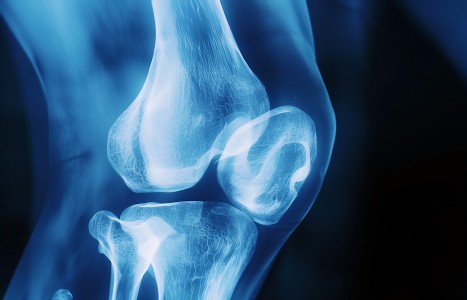While there may be no “magic bullet” when it comes to health, this should not dissuade patients or practitioners from seeking out ingredients that offer multiple health benefits. When it comes to dietary supplements, there are thousands upon thousands of choices. So, why not choose one that can address pain and assist with mental health? A supplement that can address inflammation, while also preventing certain types of cancer.
| Digital ExclusiveSingle-Leg Balance
Even if your practice is not involved in any formal program to rehabilitate balance and proprioception, it is still worthwhile to inform your patients of the interaction between subluxation and balance. The following patient education article is designed to be useful regardless of whether or not you are deeply involved in rehabilitation. Please feel free to use it for bulletin-board display, front-desk handouts, lay lectures or tableside talks.
All sorts of strengthening exercises have been devised to improve the stability of the spine. While these exercises have value, they mainly reach the large superficial muscles. Underneath the larger muscles is a deep layer of muscles - so small that some of them only connect two neighboring vertebrae. You have little conscious control over these small "intrinsic" muscles; most people cannot will one vertebra to move while keeping the rest of the spine still. Yet, these intrinsic muscles of the spine provide fine-tuning of spinal movement and position, and are essential for normal posture and balance.
Restriction or misalignment of spinal joints (spinal subluxation) can disrupt the nerve pathways that control these intrinsic muscles. The result can be loss of spinal stability and balance. Subluxation in the cervical spine (neck) is frequently associated with loss of balance. Chiropractic correction of these subluxations is often helpful in restoring balance.1 Studies of patients with low back pain - a common subluxation-related complaint - indicate that balance is significantly worse in such patients than in the general population.2,3 This loss of balance in patients with low back pain implies poor control of the intrinsic muscles of the spine due to subluxation.
The subluxation-balance connection is a two-way street. Just as subluxation can adversely affect balance, poor balance can lead to accidents, which can generate new subluxations or aggravate old ones. In a study of adults over the age of 50, those who were unable to stand on one leg for 30 seconds or more were at significantly greater risk of falls compared to those whose single-leg balance time was at least 30 seconds on each leg.4
By working with individual vertebral motions, chiropractic adjustments help to maintain the function of the intrinsic spinal muscles, thereby improving balance and stability. In terms of exercise, the most effective way to wake up the neurological pathways controlling the intrinsic muscles of the spine is to work with balance.
Practice standing on one foot. (Note: When you practice this for the first time, face a corner of the room, so you can easily catch yourself if you begin to fall. Once you feel steadier, you can get out of the corner for your daily balance practice.) Your goal is to be able to balance comfortably for 30 seconds on each foot. If you fail to improve your balance despite practice, ask your doctor of chiropractic to check for spinal subluxations.
In terms of recreational activities, dance, yoga, martial arts, skating, and bicycling are all excellent ways to tune up your balance and get your intrinsic spinal muscles into condition.
References
- Masarsky CS, Todres-Masarsky M. Subluxation and the Special Senses. In: Masarsky CS, Todres-Masarsky M (editors): Somatovisceral Aspects of Chiropractic: An Evidence-Based Approach. Churchill Livingstone, New York, 2001.
- Nies N, Sinnott PL. Variations in balance and body sway in middle-aged adults: subjects with healthy backs compared with subjects with low-back dysfunction. Spine 1991;16(3):325-330.
- Radebold A, et al. Impaired postural control of the lumbar spine is associated with delayed muscle response times in patients with chronic low back pain. Spine 2001;26:724-730.
- Hurvitz E, et al. Unipedal stance testing as an indicator of fall risk among older patients. Archives of Physical Medicine and Rehabilitation 2000;81:587-591.
Charles Masarsky, DC
Vienna, Virginia
neurofitness@aol.com
Author's note: Each patient education article in this column details research documented in Somatovisceral Aspects of Chiropractic: An Evidence-Based Approach, co-edited by Marion Todres-Masarsky, DC.


